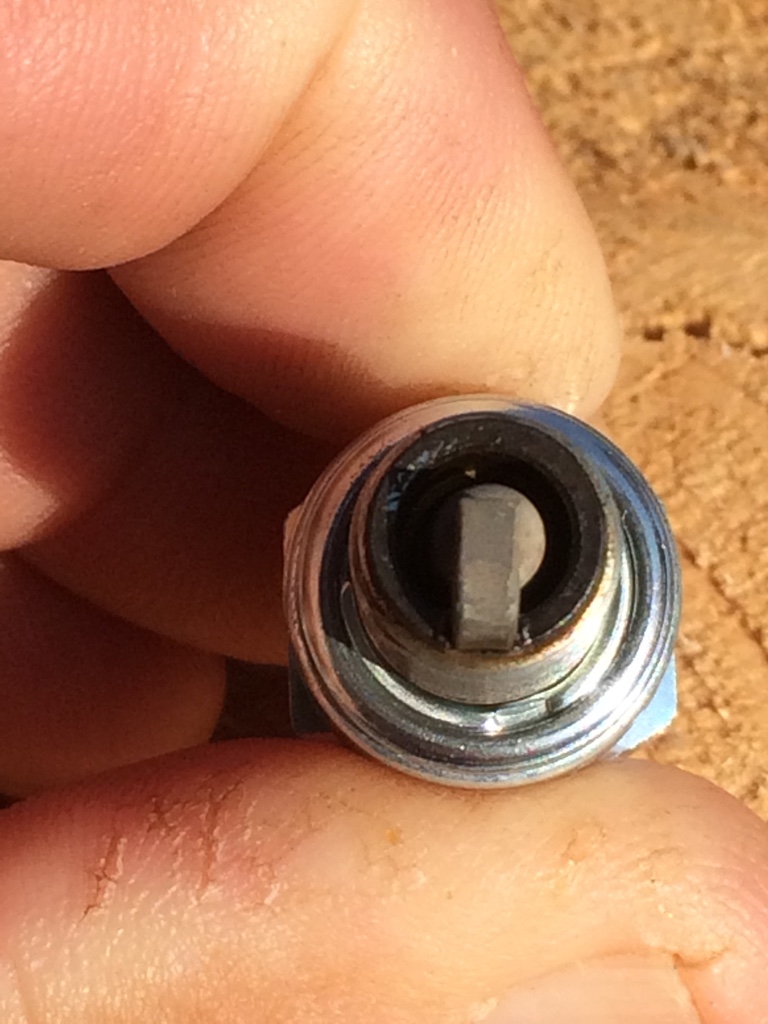Engine Basics: Detonation and Pre-Ignition
Written by Allen W. Cline
Reprinted from Issue 54 of CONTACT! Magazine, published in January, 2000
All high output engines are prone to destructive tendencies as a result of over boost, misfueling, mis-tuning and inadequate cooling. The engine community pushes ever nearer to the limits of power output. As they often learn cylinder chamber combustion processes can quickly gravitate to engine failure. This article defines two types of engine failures, detonation and pre-ignition, that are as insidious in nature to users as they are hard to recognize and detect. This discussion is intended only as a primer about these combustion processes since whole books have been devoted to the subject.
First, let us review normal combustion. It is the burning of a fuel and air mixture charge in the combustion chamber. It should burn in a steady, even fashion across the chamber, originating at the spark plug and progressing across the chamber in a three dimensional fashion. Similar to a pebble in a glass smooth pond with the ripples spreading out, the flame front should progress in an orderly fashion. The burn moves all the way across the chamber and , quenches (cools) against the walls and the piston crown. The burn should be complete with no remaining fuel-air mixture. Note that the mixture does not "explode" but burns in an orderly fashion.
There is another factor that engineers look for to quantify combustion. It is called "location of peak pressure (LPP)." It is measured by an in-cylinder pressure transducer. Ideally, the LPP should occur at 14 degrees after top dead center. Depending on the chamber design and the burn rate, if one would initiate the spark at its optimum timing (20 degrees BTDC, for example) the burn would progress through the chamber and reach LPP, or peak pressure at 14 degrees after top dead center. LPP is a mechanical factor just as an engine is a mechanical device. The piston can only go up and down so fast. If you peak the pressure too soon or too late in the cycle, you won't have optimum work. Therefore, LPP is always 14 degrees ATDC for any engine.
I introduce LPP now to illustrate the idea that there is a characteristic pressure buildup (compression and combustion) and decay (piston downward movement and exhaust valve opening) during the combustion process that can be considered "normal" if it is smooth, controlled and its peak occurs at 14 degrees ATDC.
Our enlarged definition of normal combustion now says that the charge/bum is initiated with the spark plug, a nice even burn moves across the chamber, combustion is completed and peak pressure occurs at at 14 ATDC.
Confusion and a lot of questions exist as to detonation and pre-ignition. Sometimes you hear mistaken terms like "pre-detonation". Detonation is one phenomenon that is abnormal combustion. Pre-ignition is another phenomenon that is abnormal combustion. The two, as we will talk about, are somewhat related but are two distinctly different phenomenon and can induce distinctly different failure modes.
KEY DEFINITIONS Detonation: Detonation is the spontaneous combustion of the end-gas (remaining fuel/air mixture) in the chamber. It always occurs after normal combustion is initiated by the spark plug. The initial combustion at the spark plug is followed by a normal combustion burn. For some reason, likely heat and pressure, the end gas in the chamber spontaneously combusts. The key point here is that detonation occurs after you have initiated the normal combustion with the spark plug.
Pre-ignition: Pre-ignition is defined as the ignition of the mixture prior to the spark plug firing. Anytime something causes the mixture in the chamber to ignite prior to the spark plug event it is classified as pre-ignition. The two are completely different and abnormal phenomenon.
DETONATION Unburned end gas, under increasing pressure and heat (from the normal progressive burning process and hot combustion chamber metals) spontaneously combusts, ignited solely by the intense heat and pressure. The remaining fuel in the end gas simply lacks sufficient octane rating to withstand this combination of heat and pressure.
Detonation causes a very high, very sharp pressure spike in the combustion chamber but it is of a very short duration. If you look at a pressure trace of the combustion chamber process, you would see the normal burn as a normal pressure rise, then all of a sudden you would see a very sharp spike when the detonation occurred. That spike always occurs after the spark plug fires. The sharp spike in pressure creates a force in the combustion chamber. It causes the structure of the engine to ring, or resonate, much as if it were hit by a hammer. Resonance, which is characteristic of combustion detonation, occurs at about 6400 Hertz. So the pinging you hear is actually the structure of the engine reacting to the pressure spikes. This noise of detonation is commonly called spark knock. This noise changes only slightly between iron and aluminum. This noise or vibration is what a knock sensor picks up. The knock sensors are tuned to 6400 hertz and they will pick up that spark knock. Incidentally, the knocking or pinging sound is not the result of "two flame fronts meeting" as is often stated. Although this clash does generate a spike the noise you sense comes from the vibration of the engine structure reacting to the pressure spike.
One thing to understand is that detonation is not necessarily destructive. Many engines run under light levels of detonation, even moderate levels. Some engines can sustain very long periods of heavy detonation without incurring any damage. If you've driven a car that has a lot of spark advance on the freeway, you'll hear it pinging. It can run that way for thousands and thousands of miles. Detonation is not necessarily destructive. It's not an optimum situation but it is not a guaranteed instant failure. The higher the specific output (HP/in3) of the engine, the greater the sensitivity to detonation. An engine that is making 0.5 HP/in3 or less can sustain moderate levels of detonation without any damage; but an engine that is making 1.5 HP/in3, if it detonates, it will probably be damaged fairly quickly, here I mean within minutes.
Detonation causes three types of failure:
1. Mechanical damage (broken ring lands)
2. Abrasion (pitting of the piston crown)
3. Overheating (scuffed piston skirts due to excess heat input or high coolant
temperatures)



























































